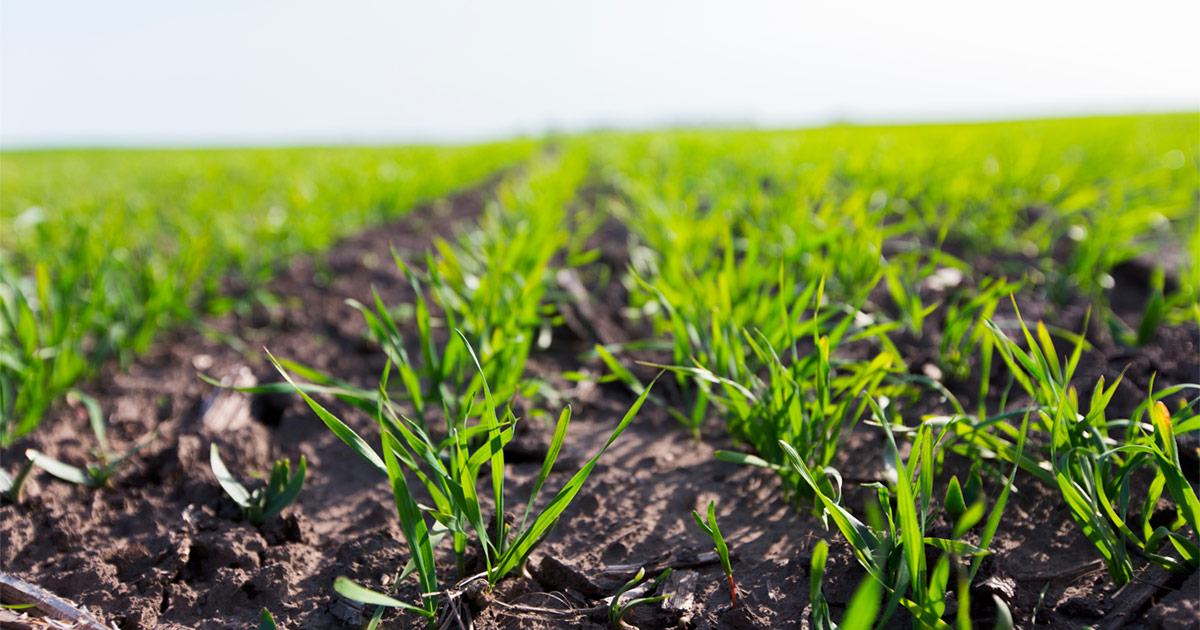Wheat Weed Solutions: Northern Plains Region
Northern Plains wheat growers are experiencing herbicide resistance issues with weeds notorious for being where they don’t belong: their fields.
An effective wheat weed management program begins with a strong three-step herbicide program. This includes: 1) an effective burndown to give the field a clean start; 2) a preemergent herbicide with a long residual; and 3) a postemergent herbicide application to clean up any extra weeds.
Growers will worry less about the weeds and reap the rewards of high-yielding wheat with a strong weed management program. The strategies and tools available for weeds in the Northern Plains region will protect the long-term viability of the field and the growers’ investment in their crops.
Help keep your wheat fields clean of these key weeds this season and beyond.
DOWNY BROME

- Downy brome can reduce wheat yields by up to 92% while producing more than 400 pounds of seed per acre.
- This weed can emerge before winter wheat, outcompeting the wheat crop for available space and nutrients.
MUSTARD SPECIES

- Deeply buried mustard can survive up to 50 years in the soil.
- Mustard overpowers winter wheat in the fall when the crop begins to emerge, outpacing in growth and stealing limited resources from the emerging wheat crop.
- Volunteer canola is an issue for this region as well.
WILD BUCKWHEAT

- Wild buckwheat can reduce yields by 66%.
- Due to the climbing nature of wild buckwheat, it can clog harvesting equipment.
CANADIAN THISTLE
- Heavy infestations of Canada thistle can reduce winter wheat yields by up to 36%.
- Canada thistle has green matter, which increases drying costs and causes dockage to harvested winter wheat.
CLEAVERS
- Cleaver plants are competitive with wheat, causing severe lodging issues, decreasing harvest efficiency and reducing yields by 30-60%.
- This weed can grow large in height and creates over the top wheat canopies to interfere with combine harvest.
DANDELION
- On average, dandelions produce up to 15,000 seeds per plant.
- The thousands of seeds dandelions produce can easily travel by wind or vehicle to other wheat fields.
FALSE CHAMOMILE
- If left untreated, false chamomile can reduce wheat yields by 20-60%.
NARROWLEAF HAWKSBEARD
- Narrowleaf hawksbeard produces up to 50,000 seeds per plant.
- This is a highly adaptable weed and can overcome various environmental conditions.
REDROOT PIGWEED
- A single redroot pigweed plant produces up to 1 million seeds, 95% of them being viable in the seedbank.
- Redroot pigweed plants release allelopathic effects and decrease growth for nearby wheat.
KOCHIA
- Kochia competes with winter wheat for water, nutrients and space after reaching 4 inches tall.
- As kochia matures, the stem breaks off and disperses more than 14,000 seeds.
GREEN AND YELLOW FOXTAIL
- Green and yellow foxtail produce up to 34,000 seeds per plant.
- Germination occurs at the same time as wheat causing economic loss and yield.
Your toolkit to success
FMC has the solution for your wheat herbicide needs. See how solutions like Affinity® brand herbicides with TotalSol® soluble granules and Finesse® cereal and fallow herbicide can control weed populations.

Burndown / Preplant
Aim® EC herbicide
Apply for kochia control.
Preemergence
Anthem® Flex herbicide
For Italian ryegrass control as well as additional downy brome, bromus species and broadleaf weed activity.
Postemergence
(Feekes 3-7)
AFFINITY® BROADSPEC HERBICIDE OR AFFINITY® TANKMIX HERBICIDE
Apply Affinity brand herbicides within a tank mix for control of key weeds including volunteer canola, wild buckwheat, Canada thistle, dandelion, false chamomile, redroot pigweed and mustard spp. Can be applied with Topguard® fungicide for foliar disease protection.
Please see label for specific instructions on control or suppression of listed weeds.
Always read and follow all label directions, precautions and restrictions for use. Some products may not be registered for sale or use in all states. FMC, the FMC logo, Affinity, Aim, Anthem, Finesse, Topguard and TotalSol are trademarks of FMC Corporation or an affiliate. ©2022 FMC Corporation. All rights reserved. 22-FMC-1840 09/22
